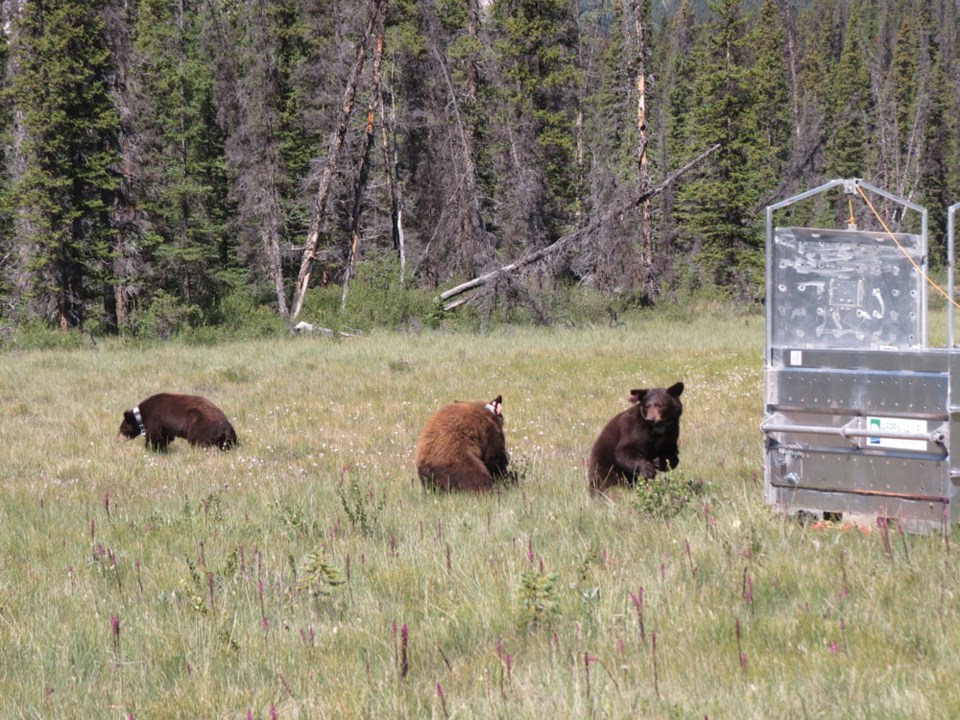BANFF – Two orphaned female black bear cubs released from captivity into the wilds of Banff National Park this summer have denned for the winter.
GPS tracking data showed one of the yearling bears went into the den on Oct. 15 and the other on Nov. 5 – both in the same remote backcountry valley about 10 kilometres from each other.
The third of the sister bears was killed and eaten by a grizzly bear in August in the Clearwater region of the park, less than two months after being brought from the Aspen Valley Wildlife Sanctuary in Ontario for release in the park.
Jesse Whittington, a wildlife ecologist for Banff National Park, said he’s very pleased the two survived through the fall, noting yearling wild black bears have naturally high mortality rates of
about 30 per cent.
It was expected these bears would have a much higher mortality rate than that, he said, given that they’ve had no exposure to the Rocky Mountains while in captivity for about 15 months.
“They did not know the landscape, they were naïve about other predators such as wolves and grizzly bears and there are lots of natural hazards such as deep flowing rivers,” he said.
The three black bear cubs were found abandoned just before midnight on April 1, 2017 in a roadside washroom on the Trans-Canada Highway at a viewpoint overlooking Vermilion Lakes just west of the Banff townsite.
There was no sign of the mother bear at the time they were found, and despite an extensive three-day search and a check of wildlife cameras there, wildlife staff could not find the cubs’ mother.
The cubs were about three months old and weighed about four- to six- pounds when they went to Ontario, and at the time of their release into Banff’s backcountry on July 17, they were a healthy 50 kilograms.
Whittington said the bears were released into an area where they had the highest chance of survival, noting the area has high-quality habitat and was a long way from human communities.
He said the three were released together in the belief they may travel together, but they immediately separated and went in different directions. The one killed by a grizzly bear travelled the furthest, about 100 kms away.
“The movements of the other two were surprisingly constrained, no large forays or explorations,” he said, noting all their movements were within 10 to 15 kms of the release site.
“They quickly formed home ranges and their home ranges overlapped, though they didn’t spend a lot of time together.”
The bears were also fortunate there was an abundant buffloberry crop in the area for them to fatten up before hibernation.
Both denned out of the valley bottoms in higher elevations, which Whittington said is a typical strategy.
“Not only is there deeper snow at high elevations that increases insulation and warmth during denning, they’re also safer from disturbances by people and other predators like wolves,” he said.
Howard Smith, managing director of Aspen Valley Wildlife Sanctuary, said it was good news to hear the two cubs have hibernated.
“The bears have exhibited normal behaviour since their release, which is gratifying to see and supports the view that rehabbed bears can lead a normal life in the wild,” he said.
“It is unfortunate that the one female died, but that was from a natural cause which all bears are subject to. At least she had more life in the wild than she would have had otherwise.”
The young bears are expected to emerge from hibernation in late April or early May.




